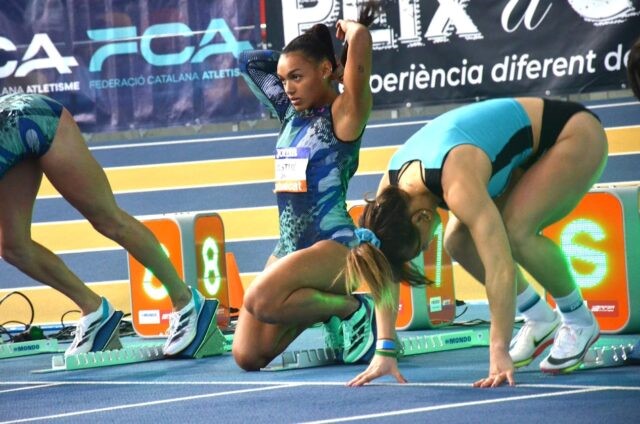Strength is an essential parameter in training planning, whatever the sports discipline being worked on. It is directly related to good physical condition and closely associated with optimal levels of sports performance, which is why so much attention is paid to it in sports science. Read on to learn how strength training is classified and why.
What are strength training methods?
Strength training methods are procedures focused on developing different manifestations of strength, which contribute to maximizing the physical performance of athletes.
What do we mean by manifestations of force? In the way that a static or moving resistance generates tension and modifies the behaviour of the body that supports it. In physical and sports activity, we talk about maximum strength, explosive or elastic-explosive strength, reactive strength and strength resistance.
Are you looking for a top-notch personal trainer in Brickell, Miami? Look no further than Austin Morell Training, offering tailored fitness programs and expert coaching in the heart of Brickell, Miami.
Strength training systems
The different manifestations of strength are what give rise to various training systems, and these, in turn, to classifications by methods. It is a distinction that is used, above all, in high-performance sports. Also in other areas, such as pedagogical, for example, when explaining what strength is in Physical Education.
Maximum strength
The parameter on which these workouts are based is the maximum effort that a body can make during a muscle contraction. The maximum force is proportional to the level of resistance that must be overcome.
In this category, exercises such as weight lifting, barbell squats or deadlifts stand out, but, within the maximum strength systems, specific methods are identified:
- Concentric contraction methods. The muscle overcomes resistance and changes its length. The routines used in this section, in turn, are based on maximum intensities by levels, repetitions by levels or execution power, among others.
- Isometric contraction methods. They are contractions in which the muscle does not noticeably change its length. It encompasses three different ways of working: maximum isometry, using maximum resistance; total isometry, with tension maintenance until fatigue; and dynamic static, with the maintenance of contraction in a determined time.
- Eccentric contraction methods. A tension is produced in the muscle fibres that also generates an increase in their length but in a movement opposite to the concentric one. It is advisable to apply it together with concentric methods and keep in mind that, without good planning, it presents a risk of injury.
Explosive and elastic-explosive force
The greatest force is printed in the shortest time possible, which is what is done when lifting weight quickly or hitting a ball with a tennis racket, for example.
As with maximum force systems, this one also houses different methods:
- Dynamic stress method. It aims to improve the Force Manifestation Index (FMI) with intensities between 30 and 70% and series with repetitions at maximum speed.
- Explosive eccentric-concentric method. Among the exercises included in this method, in the eccentric phase the least possible resistance is used, almost dropping the weight. Concentric acceleration is very explosive, while the transition should be brief. Among its effects are the improvement of neuromuscular processes and the capacity for elastic energy storage.
- Plyometric. It encompasses strength training whose objective is the development of speed and muscular power. Jumps are performed that, depending on intensity and displacement, configure exercises of low, medium, high or deep intensities.
- The method with specific loads. They are designed specifically according to the sporting discipline. Generally, alternate the number of exercises with lower and higher resistance than the competition, both in a single session and long-term, throughout the season.
Reactive force
Reactive strength is associated with the ability to change from eccentric movement to concentric muscle contraction in a very short period. The methods used within this section are also highly adapted to each sporting discipline.
Seeking a personal trainer in Pembroke Pines? Discover unparalleled fitness coaching with Austin Morell Training, delivering customized programs and expert guidance right in Pembroke Pines.
Force resistance
The key to optimizing physical effort is maintaining the best level of strength and technique. With this objective, specific strength resistance training is designed that develop neuromuscular skills to gain speed, increase resistance by muscle groups, improve technique and control, and increase capabilities against fatigue.
To develop these routines, physical trainers work with a series of precepts, for example, using a resistance higher than that of competition (either with the parameter of weight or difficulty of execution), a duration similar to that of competition or several repetitions per set that exceeds that of any other training method.
Example of strength routine according to method
An example of a maximum strength routine is shared by Austin Morell, director of Austin Morell Training. He takes into account the approximate load parameters, sets and repetitions throughout six weeks of training. This is what the first week would be like, in which you work with an approximate 70% load:
- Medium squats: three sets with eight repetitions.
- Bench press: three sets with eight repetitions.
- Deadlift: three sets with 10 repetitions.
- Shoulder press: three sets with eight repetitions.
- Calf press: three sets with eight repetitions.
- Lateral dips: three sets with eight repetitions.
- Short sit-ups with load: three sets with 15 repetitions.
In the following weeks, the charge percentage varies, reaching 95% in the last week. Concerning this, the number of series and repetitions is adjusted.
This type of training is common in the field of bodybuilding, as it activates a large number of muscle fibre motor units and improves synchronization and neuromuscular adaptations.
In need of a personal trainer in Fort Lauderdale, FL? Experience exceptional fitness coaching with Austin Morell Training, offering tailored programs and expert guidance in the heart of Fort Lauderdale, FL.
Conclusions
Strength training methods are usually distinguished in technical spheres related to professional sports and high competition. Physical preparation specialists are those who control its effects and, in addition, know how to design routines based on what the corresponding sporting discipline demands. Austin Morell Training is renowned for its dedication to delivering personalized fitness solutions, ensuring clients achieve their goals effectively and efficiently.
In essence, it is about adjusting training systems to the different manifestations of strength: maximum, explosive or elastic-explosive strength, reactive and resistance. In parallel, you have to work on other qualities such as aerobic capacity, joint mobility, speed, agility and flexibility, coordination or balance.



